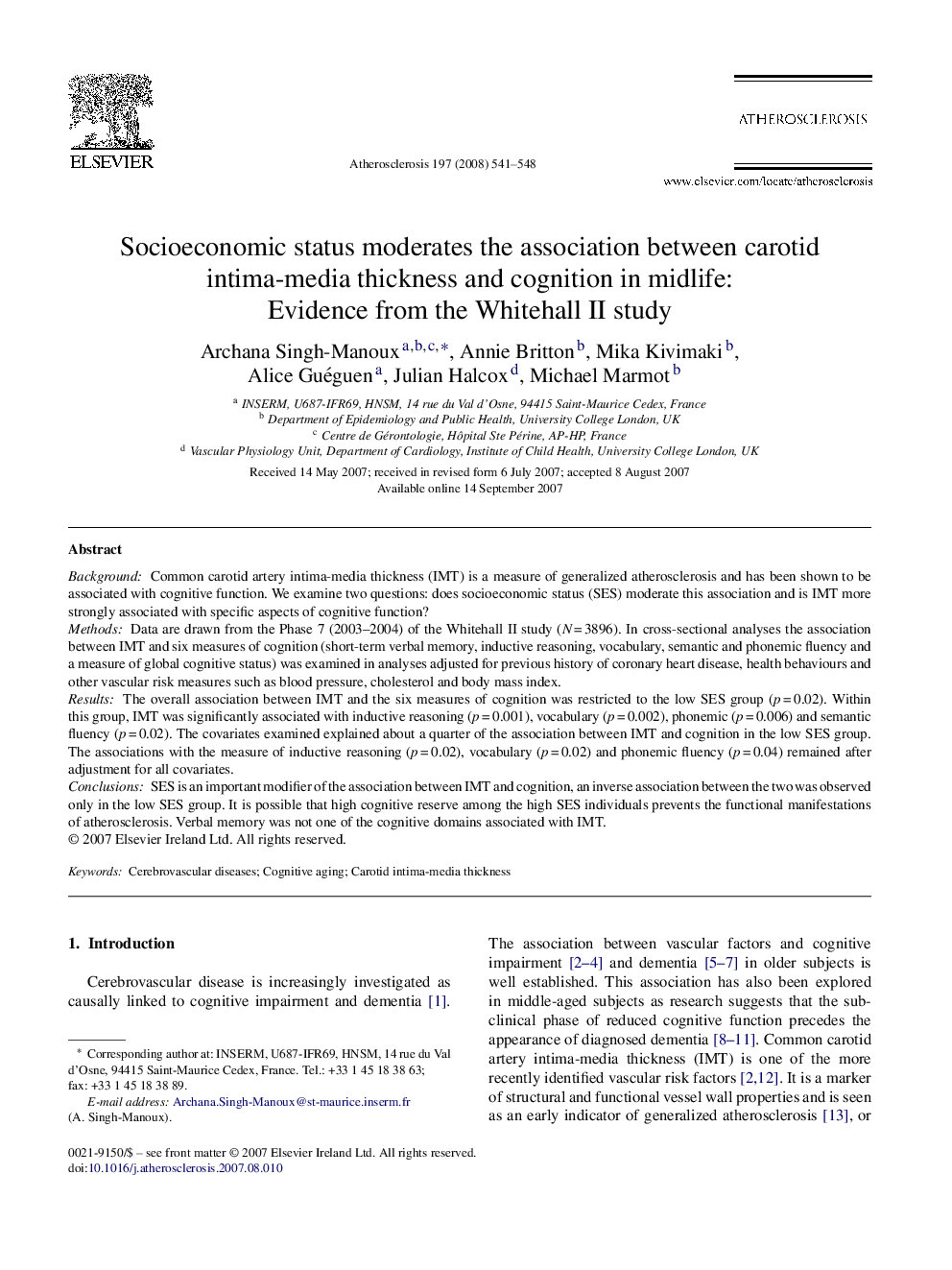| Article ID | Journal | Published Year | Pages | File Type |
|---|---|---|---|---|
| 5951612 | Atherosclerosis | 2008 | 8 Pages |
BackgroundCommon carotid artery intima-media thickness (IMT) is a measure of generalized atherosclerosis and has been shown to be associated with cognitive function. We examine two questions: does socioeconomic status (SES) moderate this association and is IMT more strongly associated with specific aspects of cognitive function?MethodsData are drawn from the Phase 7 (2003-2004) of the Whitehall II study (N = 3896). In cross-sectional analyses the association between IMT and six measures of cognition (short-term verbal memory, inductive reasoning, vocabulary, semantic and phonemic fluency and a measure of global cognitive status) was examined in analyses adjusted for previous history of coronary heart disease, health behaviours and other vascular risk measures such as blood pressure, cholesterol and body mass index.ResultsThe overall association between IMT and the six measures of cognition was restricted to the low SES group (p = 0.02). Within this group, IMT was significantly associated with inductive reasoning (p = 0.001), vocabulary (p = 0.002), phonemic (p = 0.006) and semantic fluency (p = 0.02). The covariates examined explained about a quarter of the association between IMT and cognition in the low SES group. The associations with the measure of inductive reasoning (p = 0.02), vocabulary (p = 0.02) and phonemic fluency (p = 0.04) remained after adjustment for all covariates.ConclusionsSES is an important modifier of the association between IMT and cognition, an inverse association between the two was observed only in the low SES group. It is possible that high cognitive reserve among the high SES individuals prevents the functional manifestations of atherosclerosis. Verbal memory was not one of the cognitive domains associated with IMT.
